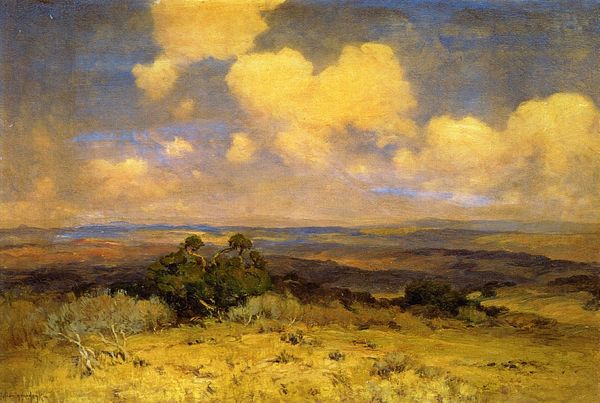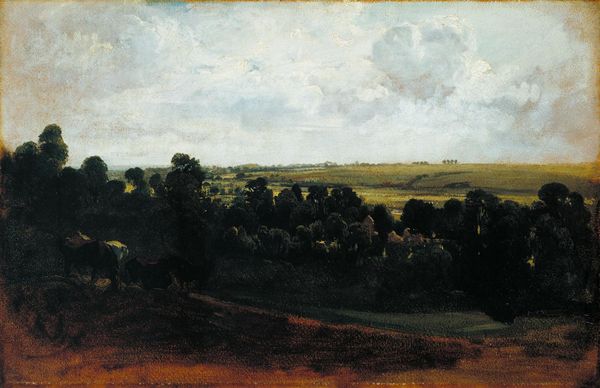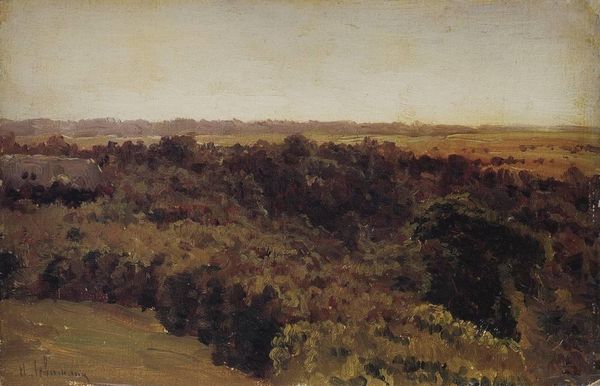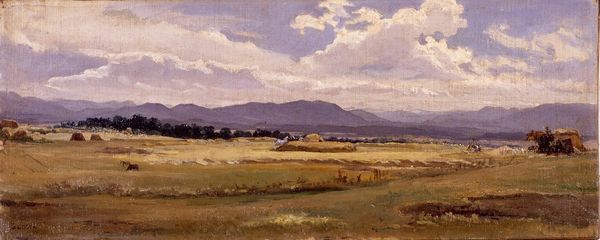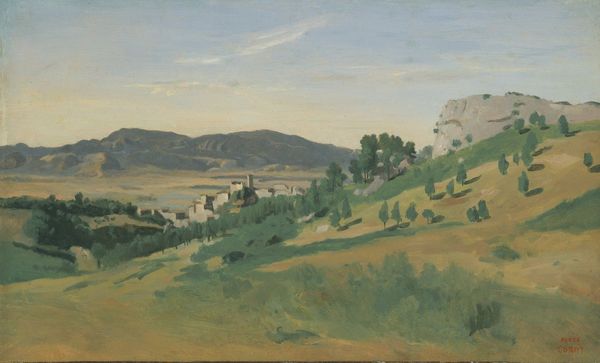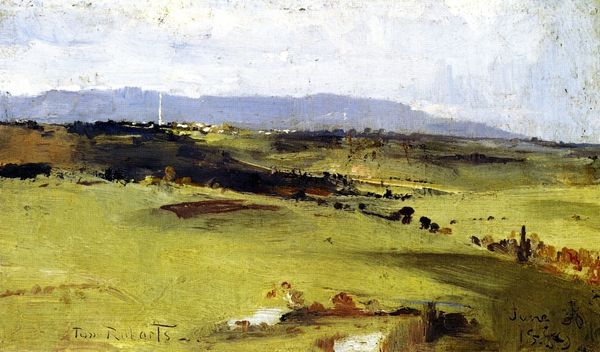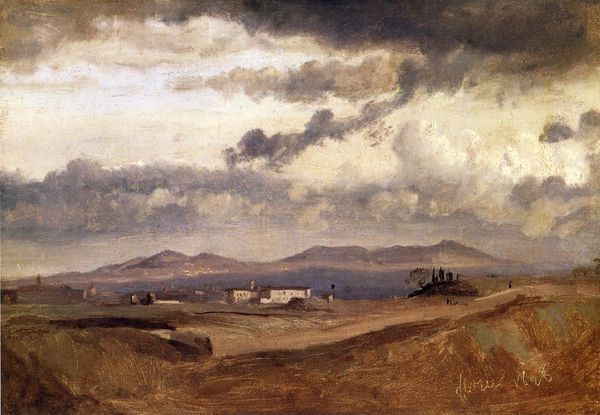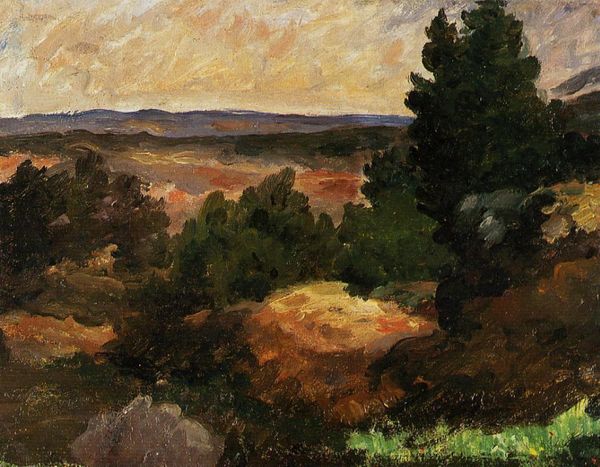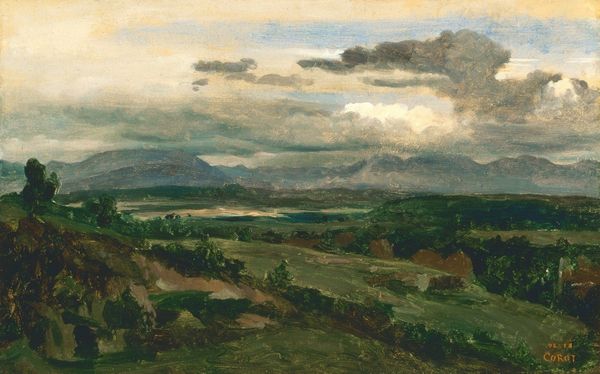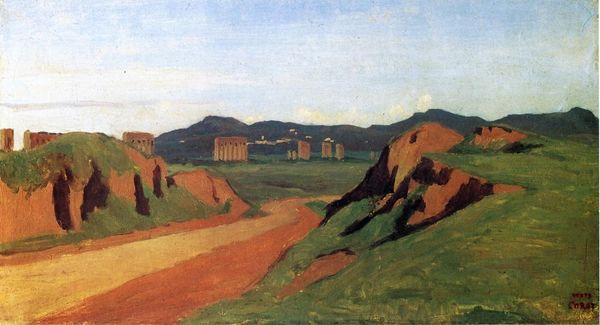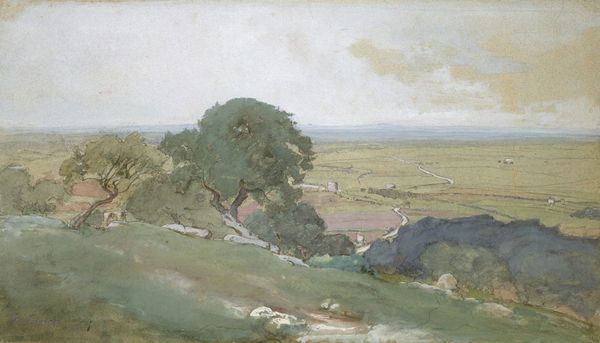
Olevano, La Serpentara 1827
0:00
0:00
jeanbaptistecamillecorot
Rudolph Staechelin Family Foundation, Basel, Switzerland
painting, plein-air, oil-paint
#
painting
#
plein-air
#
oil-paint
#
landscape
#
figuration
#
form
#
oil painting
#
romanticism
#
mountain
#
realism
Dimensions: 33.5 x 47 cm
Copyright: Public domain
Curator: Soothing earth tones... It evokes such a sense of calm. There's almost no action, no drama, just a quiet moment captured. Editor: That's interesting. Shall we give our listeners some context? What we're looking at is Corot's "Olevano, La Serpentara," painted in 1827. It is an oil on canvas work that reflects the plein-air approach that would later so define impressionism. Curator: Absolutely, knowing its plein-air nature, its outdoor origin, highlights how radically Corot captured a transient reality. How unusual it was for its time, to portray light in that exact manner! It feels radical to leave a studio! Editor: Corot painted this in Italy, amidst the growing importance of landscape painting that marked the era. He would visit Italy three times during his career. This trip cemented his artistic journey, moving away from traditional academic landscapes. Olevano itself, a small village, became a hub for artists seeking authentic representations of nature. Curator: And his choice of Olevano, I think, speaks to a wider yearning. An urge to break free from the stifling constraints of social life, for connection to unmediated experience. This is the rise of Romanticism with an obsession about experience of the natural world and places which have remained unchanged. Editor: I see the institutional aspect too; Corot was very strategic, ensuring his acceptance into the Parisian Salon system. He navigated a tricky line: innovating while still meeting expectations and ensuring his place within the established art world. Curator: Yet, despite that constraint, this is not a sublime landscape showing man's insignificance against nature. He portrays humanity embedded and reconciled to landscape, to show a modern, social and deeply personal relation with his surroundings. Editor: That is an interesting connection to note between the deeply political with that feeling that is very much alive with our present. Thank you for your insights! Curator: The pleasure was mine, such artworks help us trace historical threads through present questions and futures.
Comments
No comments
Be the first to comment and join the conversation on the ultimate creative platform.


